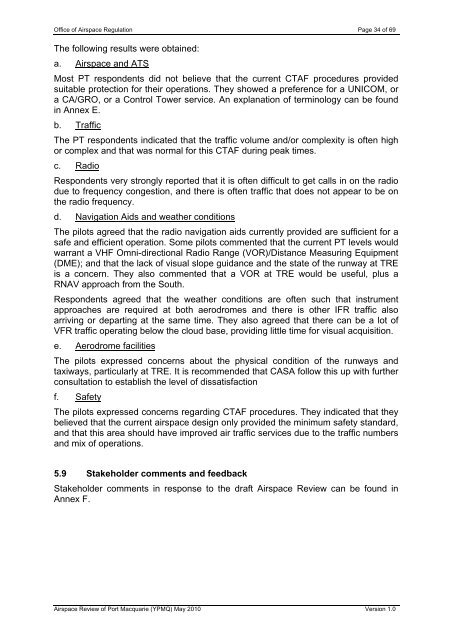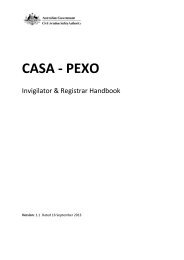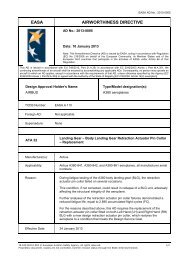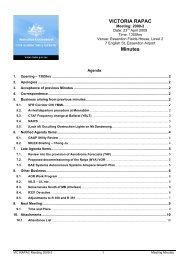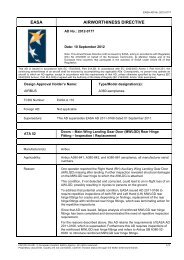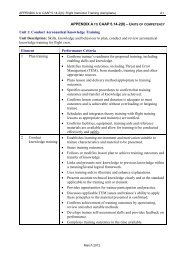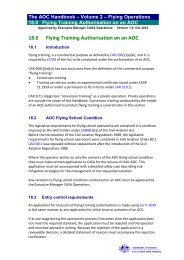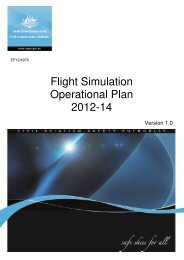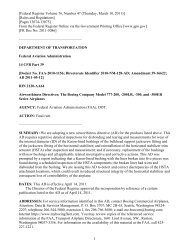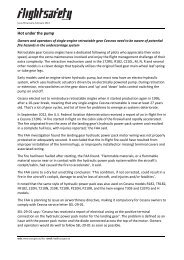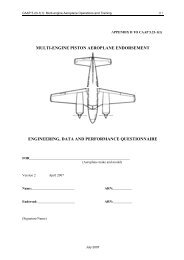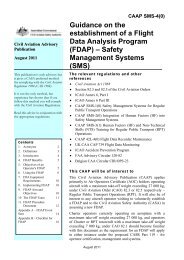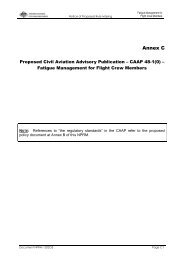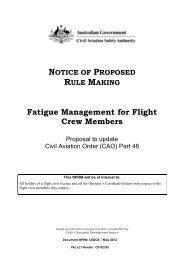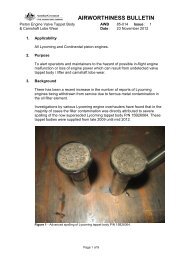Aeronautical Study of Port Macquarie - Civil Aviation Safety Authority
Aeronautical Study of Port Macquarie - Civil Aviation Safety Authority
Aeronautical Study of Port Macquarie - Civil Aviation Safety Authority
Create successful ePaper yourself
Turn your PDF publications into a flip-book with our unique Google optimized e-Paper software.
Office <strong>of</strong> Airspace Regulation Page 34 <strong>of</strong> 69<br />
The following results were obtained:<br />
a. Airspace and ATS<br />
Most PT respondents did not believe that the current CTAF procedures provided<br />
suitable protection for their operations. They showed a preference for a UNICOM, or<br />
a CA/GRO, or a Control Tower service. An explanation <strong>of</strong> terminology can be found<br />
in Annex E.<br />
b. Traffic<br />
The PT respondents indicated that the traffic volume and/or complexity is <strong>of</strong>ten high<br />
or complex and that was normal for this CTAF during peak times.<br />
c. Radio<br />
Respondents very strongly reported that it is <strong>of</strong>ten difficult to get calls in on the radio<br />
due to frequency congestion, and there is <strong>of</strong>ten traffic that does not appear to be on<br />
the radio frequency.<br />
d. Navigation Aids and weather conditions<br />
The pilots agreed that the radio navigation aids currently provided are sufficient for a<br />
safe and efficient operation. Some pilots commented that the current PT levels would<br />
warrant a VHF Omni-directional Radio Range (VOR)/Distance Measuring Equipment<br />
(DME); and that the lack <strong>of</strong> visual slope guidance and the state <strong>of</strong> the runway at TRE<br />
is a concern. They also commented that a VOR at TRE would be useful, plus a<br />
RNAV approach from the South.<br />
Respondents agreed that the weather conditions are <strong>of</strong>ten such that instrument<br />
approaches are required at both aerodromes and there is other IFR traffic also<br />
arriving or departing at the same time. They also agreed that there can be a lot <strong>of</strong><br />
VFR traffic operating below the cloud base, providing little time for visual acquisition.<br />
e. Aerodrome facilities<br />
The pilots expressed concerns about the physical condition <strong>of</strong> the runways and<br />
taxiways, particularly at TRE. It is recommended that CASA follow this up with further<br />
consultation to establish the level <strong>of</strong> dissatisfaction<br />
f. <strong>Safety</strong><br />
The pilots expressed concerns regarding CTAF procedures. They indicated that they<br />
believed that the current airspace design only provided the minimum safety standard,<br />
and that this area should have improved air traffic services due to the traffic numbers<br />
and mix <strong>of</strong> operations.<br />
5.9 Stakeholder comments and feedback<br />
Stakeholder comments in response to the draft Airspace Review can be found in<br />
Annex F.<br />
Airspace Review <strong>of</strong> <strong>Port</strong> <strong>Macquarie</strong> (YPMQ) May 2010 Version 1.0


